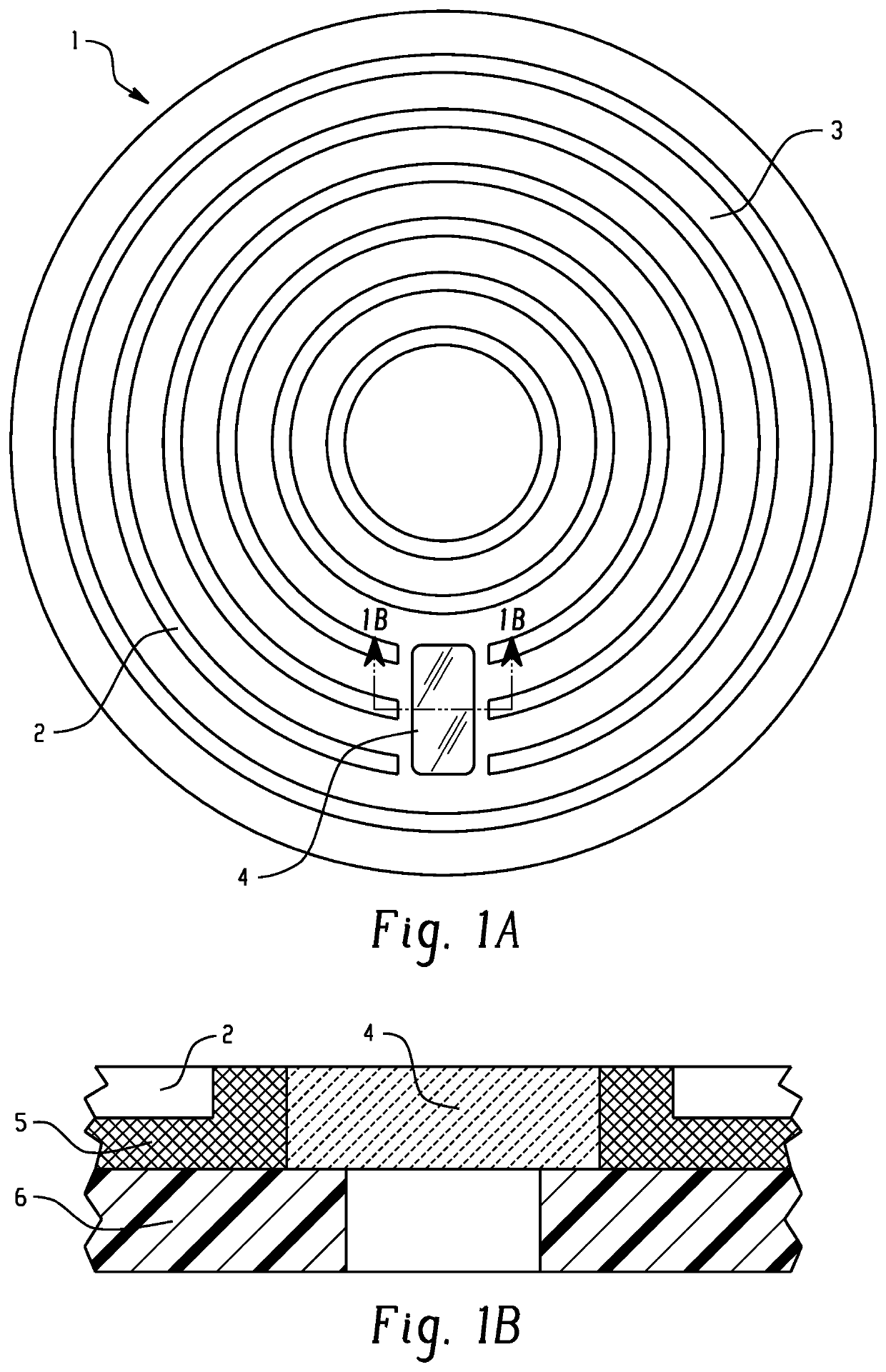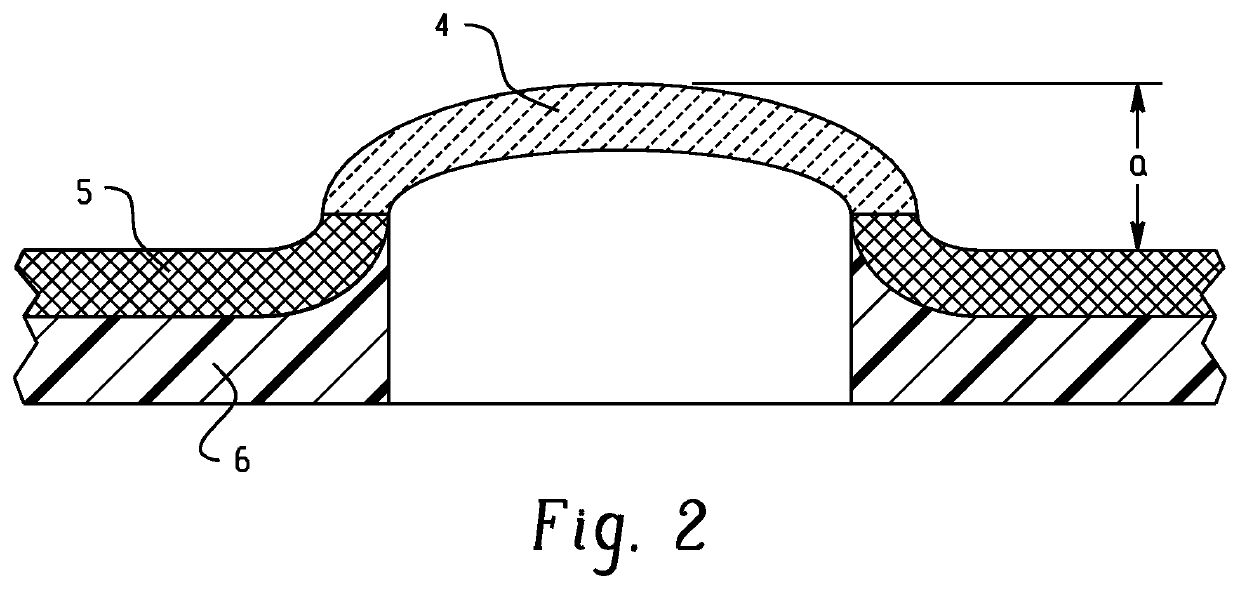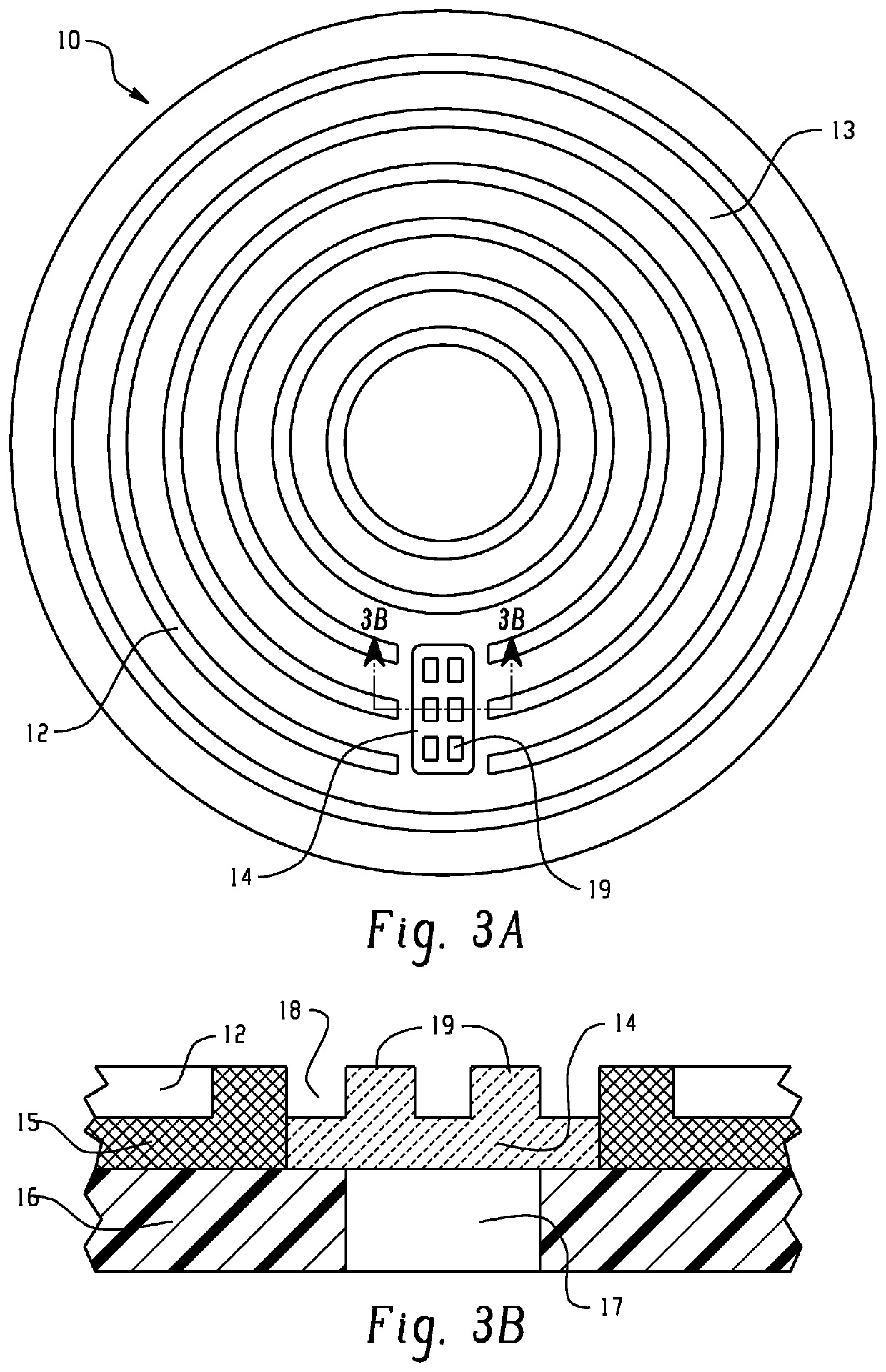Cmp polishing pad with uniform window
a technology of polishing pads and windows, applied in the field of polishing pads, can solve the problems of non-uniform or non-planar and achieve the effect of avoiding the formation of a splinter or a splinter in the topography of the wafer
- Summary
- Abstract
- Description
- Claims
- Application Information
AI Technical Summary
Benefits of technology
Problems solved by technology
Method used
Image
Examples
example 1
[0057]A polishing pad was prepared that incorporates a window of the design illustrated in Drawing 5. The window (301) was circular, with a diameter of 18 mm and a thickness of 2.032 mm. These dimensions are equivalent to those found in prior art window pads. Samples were made from several materials capable of transmitting UV / visible light in the wavelength range of 250-800 nm.
[0058]The recess design consists of a central raised region or element (303) of 6 mm in diameter that has no recesses, and an outer region of eight polygonal raised areas or elements (303′). The surface of all raised elements was coplanar with the polishing pad top surface, and the bottom of the window (301) is coplanar with the interface between the polishing portion (i.e. polishing layer) and lower layers (i.e. sublayer or base layer) of the polishing pad. Between central and polygon regions, there is a circular recessed area (302) of 1.524 mm width and 0.762 mm depth. Each polygon raised area (303′) was sep...
PUM
| Property | Measurement | Unit |
|---|---|---|
| Young's modulus | aaaaa | aaaaa |
| Young's modulus | aaaaa | aaaaa |
| size | aaaaa | aaaaa |
Abstract
Description
Claims
Application Information
 Login to View More
Login to View More - R&D
- Intellectual Property
- Life Sciences
- Materials
- Tech Scout
- Unparalleled Data Quality
- Higher Quality Content
- 60% Fewer Hallucinations
Browse by: Latest US Patents, China's latest patents, Technical Efficacy Thesaurus, Application Domain, Technology Topic, Popular Technical Reports.
© 2025 PatSnap. All rights reserved.Legal|Privacy policy|Modern Slavery Act Transparency Statement|Sitemap|About US| Contact US: help@patsnap.com



